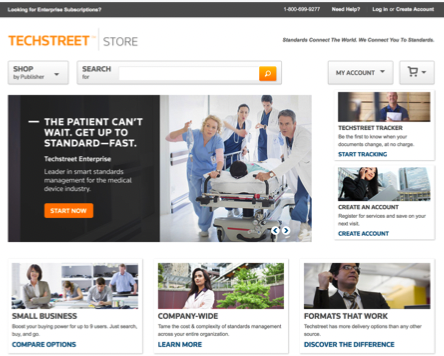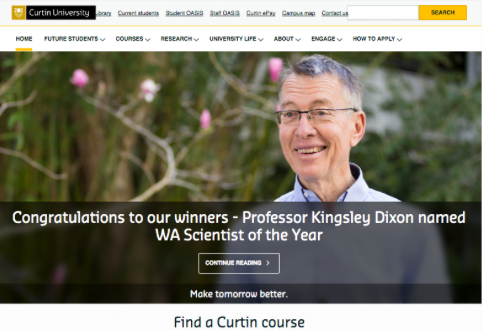Problem Statement
Science Co. is a leading provider of specialized software to support drug discovery. As they expanded their offerings to an adjacent space focused on early-stage drug discovery, the product management team needed to ensure the success of this ambitious move. Based on their past experience with TUG, they asked us to help them validate their concepts and gain deeper insights into prospective customers across various scientific roles.
TUG’s research empowered Science Co. to move forward with confidence in their expansion into a new market. By providing actionable insights and strategic recommendations, we equipped Science Co. with a clear understanding of user needs across different scientific roles, validated product concepts and feature priorities, a roadmap for future development and market positioning, and tools and methodologies for ongoing user research and product refinement.
Validating and Informing Product Strategy
Science Co. faced a significant challenge: the market they were entering was complex and evolving rapidly. How can they enter the market and truly meet customer needs? To answer this challenge, TUG designed and executed a comprehensive research program. Our goals were threefold:
Validate the need for Science Co.’s new drug discovery platform,
Articulate its unique value proposition for key audience segments, and
Inform the product development strategy with actionable user insights.
Current State and Proposed Future State of Product Strategy Approach
The Solution: Multi-Phase User Research and Concept Testing
TUG designed and conducted an extensive research program to address Science Co.’s needs. We began with in-depth interviews, speaking with over 70 scientists across various roles, including chemists, biologists, pharmacologists, and geneticists. This broad range of perspectives provided a comprehensive view of the potential user base for Science Co.’s new platform.
To complement these interviews, we evaluated core functionality using a combination of conceptual prototypes and assessment of in-progress feature development with live staging environments. The prototypes gave the product team insight about features under development and provided valuable feedback on the product roadmap. The live-staging evaluations were a hands-on approach that helped identify usability issues and areas for improvement in real-time. All of this saved precious time and development resources.
Recognizing the importance of visual representation in scientific work, we developed interactive prototypes for key features. These prototypes served as tangible demonstrations of concept ideas, facilitating more meaningful feedback from potential users.
Validating Needs and Shaping Future Development
Our research yielded several high-impact outcomes for Science Co., providing them with a solid foundation for their expansion into a new market.
First and foremost, we validated the product need and value proposition. Our findings confirmed the platform’s potential as a time-saving, one-stop solution for their primary target customers. We also identified significant value for a secondary customer type, uncovering insights about their unique workflow needs. This dual appeal to both types of customers positioned Science Co.’s platform as a versatile tool with broad market potential.
To support product development, we created user-centric data models. These bespoke models mapped the platform’s high-level data structure to different user types, providing crucial context around user needs and the data points they prioritize. This framework became an invaluable tool for informing future development decisions, ensuring that the platform would continue to evolve in alignment with user needs.
Data Needs per Role, Organized by Biological Research Category
The software being developed is on the leading edge of scientific discovery, incorporating advanced tools such as knowledge graphs and AI-driven predictive analytics. Our research helped them evaluate different ways these might be deployed. We generated and prioritized use cases for speculative feature areas, including an interface for a knowledge graph to help discover connections between a variety of components in their world with layered data views. We also developed interface concepts for predictive analytics tools to make them more accessible to non-computational scientists.
Our in-depth user research delivered clarity about user needs and preferences. We identified key differences in how customers approach and utilize specialized information, exposed requirements for flexible filtering and comparison tools, and gathered user feedback about the importance of clear terminology and inline help for complex concepts.
Use Case Inventory, Oganized by Role and Site Map
Finally, we identified potential expansion opportunities for Science Co. Our research revealed interest in expanding their data model to include different kinds of inputs. We also discovered user interest in expanding the scope of their explorations to include different classes of drugs, opening up new avenues for future product development.
A Foundation for Continuous Development
Beyond providing immediate insights, our work established a foundation for ongoing product refinement. We designed and built a reusable participant database that serves as a valuable resource for future research initiatives, allowing for efficient and targeted follow-up studies. Our comprehensive user models are a durable input to help Science Co. continually tailor their product roadmap to meet evolving user needs.
The methodology we established for concept testing and user feedback collection can be applied to future feature developments. This ensures that Science Co. can continue to make informed decisions about their product evolution long after our initial engagement.
“TUG’s research has been invaluable in shaping our product development strategy. Their insights have given us the confidence to move forward with our expansion into [a new] market. We now have a roadmap that we know is aligned with real user needs and market opportunities.”
Perhaps most importantly, our research provided Science Co. with clear strategic direction. They now have guidance on how to position their product in the market and which areas to prioritize in their development efforts, setting them up for long-term success in their new market.






